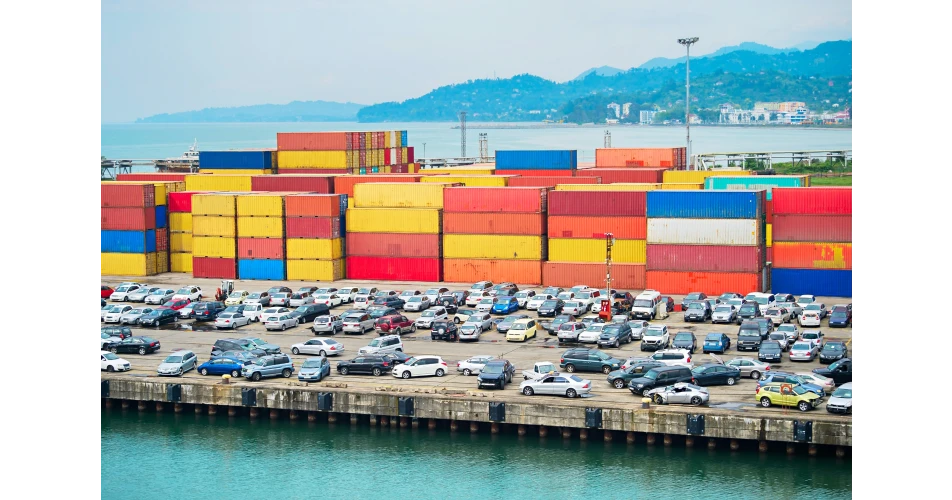In our recent article on Used Vehicle Imports, we highlighted the huge numbers of imported Japanese used cars that are currently arriving in Ireland, literally by the ship load, together with the opportunities this is creating for independent garages. However, is this new business as simple to capture as it seems and what are the pitfalls to look out for?
If you count your workshop experience in decades rather than years, then you may well remember an era where the term Japanese import was enough to strike fear into any mechanic. In the late 90’s into the 2000’s, there was an influx of Japanese used car imports and as readers may recall, there were some weird and not so wonderful models that found their way on to Irish roads. The problem was when these vehicles went wrong it was often very difficult, or sometimes impossible, to get spare parts, especially in this pre-internet era.
Fast forward some twenty five years and the parts market has been transformed, by faster lead times and electronic cataloguing. In theory, this should make finding parts for the new wave of Japanese imports more straight forward. Indeed, talk to garages repairing these cars and factors and parts suppliers identifying the parts and most will tell you, it is far from a return to the dark days. Most will say that in 80-90% of cases, identifying and sourcing the right parts is not a problem. However, with imports now running so high, this grey area of up to 20% is very significant.
It is important to note firstly that the profile of the imports has changed significantly. Back in the day, imports were almost exclusively Japanese made, Japanese origin models, many of which had never appeared in Ireland in any guise. Now there are still the odd rarities, but most tend to be either Japanese made models with a European equivalent, or European made models that have been sold to Japan.
The type of model has also changed, with most imports now compact petrol vehicles, such as the VW Polo and Golf, Audi A3 and Honda Fit. Many people believe this is the result of a shift in the type of buyers, as many households are taking on a third car for a live at home student, or young employee.
Parts identification problems can arise on imports, regardless of whether they are Japanese or European made.
With cars made in Japan, it is all too easy to make the wrong parts assumptions. For example, on the outside a Honda Fit may look like a Honda Jazz and a Toyota Vitz like a Yaris. However, there are some subtle external differences and delve under the bonnet and it gets even more complicated.
For example, many Toyota and Mazda’s that are being brought in, have hybrid engines that were never used on European models, making even simple parts like filters hard to find. Here the normal recourse is the electronic parts catalogue, but because most popular catalogues do not recognise 10 digit Japanese Vin numbers, information is not always available. Many of these imports have no K-Type reference, which is a key driver of these catalogues. Added to this, information recorded at the time of import registration is not always as accurate as it should be, adding to issues.
Generally there is a solution to these problems, but it means the garages or parts suppliers digging a little deeper and searching in different ways. Normally a part will be available, but because it has yet to be correctly linked in most online catalogues, it is more difficult to find.
The situation with body parts and lighting can be even more complicated, especially where an import has no European equivalent. Indeed, you do hear of these cars being written off after accidents, because parts can only come from Japan and if storage and car hire costs are involved, repair will often not be economical.
With European models coming in from Japan, the parts situation should be more straight-forward and indeed this is often the case. However, there are exceptions. For example, many French origin cars coming from Japan, especially some Peugeot models, often have different engines to their European counterparts. In some cases, these engines may have never been used in Europe, or in others, the engine may have been used in a completely different car from a different manufacturer. Again, this will mean a broader parts search.
Another issue is that the emission based registration system, does not always capture accurate information on registration imports, once again leading to difficulties with standard reg based catalogues. A good example of this is with many VW group models. Here, while models may have the same cc engines, this engine type can have three different HP outputs. Each variation of HP requires a different filter configuration and in some cases, brake components.
Again, parts for these models are generally available, but not always correctly linked to the models in the online catalogues. There are also instances where, especially German origin Japanese vehicles, have different lighting components to European models, something that can be expensive for the driver and also lead to potential accident write-offs. There can also be issues with heating systems and air-con components.
So if identification and sourcing of parts does prove to be a problem on a Japanese import, what steps can be taken by a garage to solve the problem? Below, is some general advice compiled through talking to motor factors and parts manufacturers.
What to do if ID & Sourcing of parts for a Japanese import is proving a problem - Gather as much information on the car as possible. Take a picture of the VIN plate and look for engine numbers.
- Try to find the OE number of the part being replaced, or the manufacturer name and part number if this part has been previously replaced. This information will allow a supplier to cross reference the part and supply an accurate replacement.
- Check the measurements of parts, especially filters and make sure they match the new part.
- Do visual comparisons both with online images and physical parts.
- Remember, in some instances, parts will not be available on a normal supply lead time, so it may be wise to secure the parts before bringing the car in for repair or service.
- It may be necessary to inspect the car and identify parts at least a few days before bringing the car in.
- If it is a regular customer and a car you are likely to work on regularly, keep a note of the vehicle information and the appropriate parts numbers.
It is also worth remembering that because the mainstream digital catalogues are either European or globally based, they are unlikely to put significant resources into solving this problem, as it is unique to Ireland and as such, the numbers, in terms of the overall European car parc, are very small. However, there are some progressive parts suppliers and distributors doing their best to address issues.
It may sound a little daunting, but it is likely to be worth the effort, as the Japanese import market continues to grow. Effectively, it means that on a relatively low percentage of vehicles, a garage may not be able to rely on simple catalogue look ups and with their supplier, might need to do an old-school deep dive to get the right parts for the job.
 Most imports are now compact petrol vehicles, such as the VW Polo & Golf, Audi A3 & Honda Fit
Most imports are now compact petrol vehicles, such as the VW Polo & Golf, Audi A3 & Honda Fit
